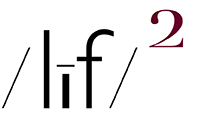cat dishes
In the case of what the camera sees, it is not a straight forward proposition. I need to actively look for the elements which I think will work together in order to make a good picture. Quite obviously, my eye does not see what the camera sees using shallow focus and overexposure techniques. Consequently, at this point in the side trip (MO wise) I have a number of misses inasmuch as I have not identified precisely what all of the elements necessary for a good picture of this type are.
Quite obviously, the one absolutely necessary element is an area within the frame of "hot" direct sunlight and in my messing about I have decided that that hot spot seems to work best on the bottom surface of the picture. I have also decided that a corresponding area(s) of darker tonal values is also a necessary element which stands in contast (figuratively and literally) to the hot spot.
Another key element, independent of the light, is that of perspective. So far all of the "successful" pictures have been made with a 12mm (24mm- 35mm equiv.) lens which produces a diminishing perspective POV. All of these pictures are made looking down but I believe that the diminishing perspecive thing will work with any POV - up, down, right angle, etc.
Yet another key element is that there needs to be a narrow zone of sharp focus - or least apparent sharpness relative to the rest of the picture - in order to give the eye somewhere to land.
All of that written, what I am trying to do is to create a formula for making what the camera sees pictures. This idea is very foreign to me inasmuch as my picture making has almost always been of the spontaneous variety. No formula, no rules, no dictates or other considerations while making pictures: just see it and picture it.
Over time, it might be possible to train my eye to see what the camera sees but until that time - if it ever arrives - I will most certainly require the guiding hand of a formulaic approach to making what the camera sees pictures.
Did I mention that I am having fun with this?
